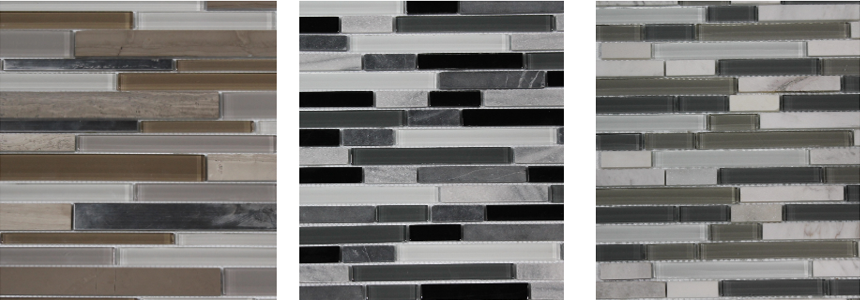Picking your tile plays a big part during any renovation project. Tiles are commonly used in kitchens and bathrooms as they are a practical and versatile option. Not to mention tiles of any type look good and come in a dazzling array of colors, patterns, and even textures. However, there is more to picking tile than just affordability and aesthetics.
Different Types of Tile
You have to consider a lot of different factors when selecting a tile for the kitchen or the bathroom. The tile has to look good and fit within your budget. But perhaps most importantly, the tile material you select should be right for the room. While the choices are overwhelming, the most commonly used tile types are:
- Porcelain
- Ceramic
- Glass
- Mosaic
- Natural stone (marble, limestone, etc.)
- Cement
- Travertine
There are pros and cons to each tile type which makes it suitable for a particular area in the house. For example, limestone and cement tiles are a great option for outdoor patios. While natural stone tiles look good, they need a little more care and maintenance. So not many people like using them for bathroom floors. They can look good on your kitchen walls instead.
Ceramic Tile
Ceramic tile is made from clay and other natural material. It is affordable, and durable making it the perfect option for high traffic areas like the kitchen. it is also easy to clean and maintain in the long run. Unfortunately, you cannot use ceramic tile outdoors as they absorb moisture easily. That’s why experts do not recommend ceramic tile for bathrooms and shower walls.
Porcelain Tile

Porcelain tiles are also made from clay, in fact they are a type of ceramic. They are a bit more expensive than ceramic tiles as they require professional installation. Porcelain is also less water absorbent when compared to the average ceramic tile, making them a good option for bathrooms. It’s a good choice for outdoor areas and for those with allergies as it doesn’t hold onto dust or dirt.
Glass Tile
Glass tiles are stain-resistant and you don’t have to worry about acid spills like lemon or vinegar. This type of tile comes in a variety of shapes and colors, ideal for blending into any decor scheme. Unfortunately, glass is also fragile and therefore not suitable for high traffic areas like the bathroom and kitchen floors. Designers offer recommend glass tiles in places like backsplash, around the fireplace or on an accent wall.
Mosaic Tile

You will commonly find mosaic tiles on kitchen and bathroom walls as a backsplash. They are available in a wide choice of colors and shapes. They are stain-resistant and do not absorb moisture easily. However, they can be slippery so you may not want to use them for the bathroom floor. They are easy to clean and can be assembled in different patterns.
Tips for Selecting Tile
The budget plays a big role in any renovation or remodeling project. You may have to compromise on your ideal choice because of the overall cost. On the other hand, you can create beautiful designs even with affordable materials with a little imagination.
One thing to remember when selecting tiles is that you don’t have to use the same colors, shapes or material everywhere. You can choose expensive tiles for a small backsplash and use more affordable options for the kitchen floor.
Here are a few tips for selecting the right tile for your project:
Location
Always consider the space where you want to use tiles. It will influence your choice of material. Some tiles work well both indoors and outdoors, while others are rated for one or the other. The kitchen and mudroom floors are high traffic areas. So you’ll want tiles that are durable and easy to clean. Bathrooms are often wet, so you don’t want a tile that is slippery or absorbs moisture.
Size
Different types of tile come in a variety of sizes. Some material options have standardized sizes while you can assemble others into bigger patterns. Large tiles can make a small space feel bigger and are easier to clean. Small tiles make a room feel cozier and are a good choice for intimate spaces.
Installation, Maintenance and Weight
Some tiles are easier to install than others. You should keep that in mind if you plan to install the tiles yourself. The tile you select will depend on your expertise with DIY projects. If you are completely remodeling the bathroom or kitchen, it may be better to go with professional installers.
Another thing to consider is the level of care required to maintain your tiles. The kitchen is a high-traffic area that gets dirty very often, between the cooking and the eating. You’ll want tile that’s easy to clean. In the bathroom, you’ll need tile that’s highly resistant to water. For all things tile maintenance, visit our past blog post.
You should also consider the weight of the tile. Some materials are naturally heavier than others and are unsuitable for projects on the second or third floor. Others are lightweight and versatile, so you can use them anywhere.











































